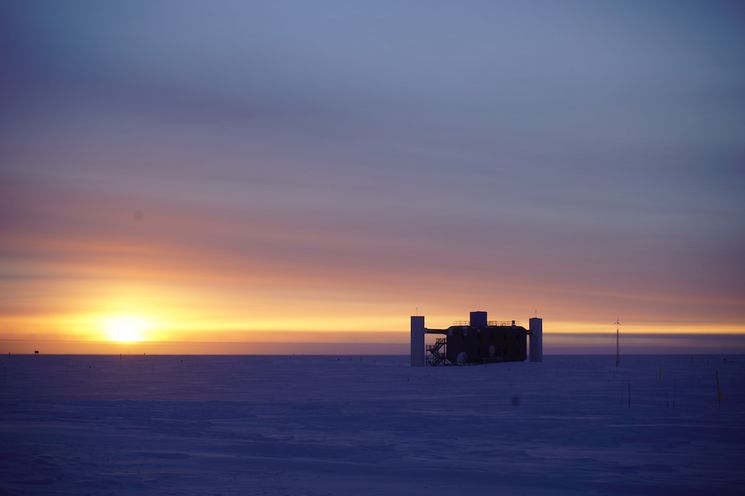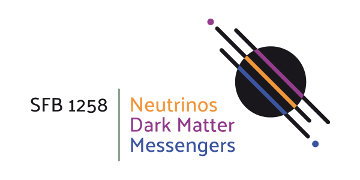Searching for cosmic neutrino sources
Astrophysical neutrinos are nowadays measured, where in the low-energy domain of ten to hundred MeV, the Sun and collapsing stars are the main targets. At high energies of up to a few PeV, cosmic accelerators or perhaps decaying or annihilating dark matter particles are the main sources. In area M we explore neutrinos as astrophysical messengers and the physics of their compact sources, leaving out the more traditional subject of solar neutrinos (although some of the participating scientists have long-standing involvement in Borexino which we now use for a very-short baseline oscillation experiment in area N).
In the high-energy domain, we will seek astrophysical counterparts as for example the blazers to explain the isotropic neutrino emission that has been observed for the past few years by IceCube, and we will use novel techniques to correlate neutrinos with the highest-energy cosmic rays observed by the Pierre Auger Observatory and the Telescope Array (Project M01). On the other hand, gamma-ray bursts (GRBs) remain a favored source for at least some of the high-energy neutrinos, motivation us to investigate a common framework for jet emission by blazers and GRBs (Project M02). In these projects, we establish new and innovative collaborations between neutrino observers, astronomers, and astrophysicists.
Neutrinos from collapsing stars figure prominently in area M, fostered by a unique concentration of expertise in the Garching-Munich area, including numerical supernova modelers, neutrino experimentalists in the JUNO and IceCube collaborations, and theoretical neutrino astrophysicists. These communities will collaborate to prepare for the observation of the diffuse supernova neutrino background in Project M03, to perform 3D modeling and forecast short time variations in the IceCube signal of the next nearby supernova (Project M04), and to develop a better understanding of multi-flavor neutrino transport and particle physics ingredients.
The presence at TUM of a world-leading experimental nuclear science group to explore the properties of strange hyperons offers the opportunity to focus a new effort on solving the "hyperon puzzle" and explore their role in the nuclear equation of state. In the long term, this work will blaze the trail toward a realistic hypersonic equation of state for compact stars with ramifications for core collapse, neutrino fluxes, and neutron stars (Project M07).


